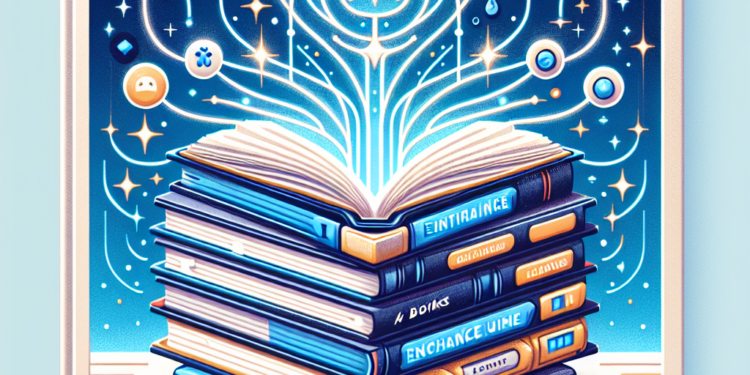Artificial intelligence (AI) has been a hot topic in recent years, with its potential to drastically change the way we interact with technology and the world around us. One area where AI has already made a significant impact is in enhancing user experience. AI-powered technologies are being used to create more personalized and intuitive experiences for users, whether they are interacting with a website, app, or even a physical product. One way to learn more about how AI can enhance user experience is by reading books on the subject. In this article, we will explore some of the best AI books that can help you better understand the impact of AI on user experience and how to leverage it to create better interactions with your users.
“The User Experience Team of One: A Research and Design Survival Guide” by Leah Buley
While not specifically focused on AI, this book provides a comprehensive guide for designers working in small teams or as solo practitioners. Buley covers a range of topics related to user experience, including research, design, and testing. By understanding the fundamentals of user experience design, designers can better incorporate AI technologies into their workflows to create more engaging and intuitive experiences for their users.
“The Age of AI: How Artificial Intelligence Is Transforming Organizations” by Tom Davenport
In this book, Davenport explores how AI is changing the way organizations operate and the impact it is having on different industries. He discusses how AI is being used to streamline processes, improve decision-making, and enhance customer experiences. By understanding the broader implications of AI on organizations, designers can better integrate AI technologies into their user experience design process to create more efficient and impactful experiences for their users.
“Machine Learning for Designers: Beautiful Data and User Experiences” by Patrick Hebron
This book provides a practical guide for designers looking to incorporate machine learning techniques into their design process. Hebron covers the basics of machine learning and provides examples of how designers can use it to create more personalized and engaging experiences for users. By learning about machine learning techniques, designers can better understand how AI can be leveraged to create more effective user experiences.
“Designing Conversational Interfaces: Principles of Conversational UX Design” by Alper Cugun and Ebru Cucen
Conversational interfaces are becoming increasingly popular, with the rise of voice assistants like Alexa and Siri. In this book, Cugun and Cucen provide a comprehensive guide to designing conversational user experiences. They cover topics such as conversation design principles, user engagement, and usability testing. By understanding how to design effective conversational interfaces, designers can create more natural and intuitive interactions for users using AI technologies.
“Artificial Intelligence for Marketing: Practical Applications” by Jim Sterne
While focused on marketing, this book provides valuable insights into how AI can be used to enhance user experiences. Sterne discusses how AI is being used to personalize marketing campaigns, predict customer behavior, and improve customer engagement. By understanding how AI is being used in marketing, designers can better incorporate AI technologies into their user experience design process to create more personalized and relevant experiences for their users.
“The Design of Everyday Things” by Don Norman
While not specifically focused on AI, this classic book by Don Norman provides timeless principles for designing effective user experiences. Norman covers topics such as affordances, feedback, and mapping, which are fundamental to creating intuitive and user-friendly interactions. By mastering these foundational principles, designers can better incorporate AI technologies into their user experience design process to create more effective and engaging experiences for their users.
“AI Superpowers: China, Silicon Valley, and the New World Order” by Kai-Fu Lee
In this book, Lee explores the impact of AI on society and the economy, focusing on the race between China and Silicon Valley to dominate the AI industry. He discusses how AI is reshaping industries such as healthcare, finance, and transportation, and the implications this has for society. By understanding the broader implications of AI on society, designers can better incorporate AI technologies into their user experience design process to create more impactful and ethical experiences for their users.
“Future Ethics” by Cennydd Bowles
Ethics is an important consideration when designing user experiences with AI technologies. In this book, Bowles explores the ethical implications of AI and provides guidance on how to create ethical and responsible AI-driven experiences. By understanding the ethical considerations of AI, designers can create more trustworthy and transparent experiences for their users.
“The AI Advantage: How to Put the Artificial Intelligence Revolution to Work” by Thomas H. Davenport
In this book, Davenport provides a comprehensive guide to leveraging AI technologies to create competitive advantages for organizations. He covers topics such as strategy, implementation, and impact assessment, and provides practical examples of how AI is being used to enhance user experiences. By understanding how AI can be used strategically, designers can better incorporate AI technologies into their user experience design process to create more impactful and innovative experiences for their users.
“Radical Technologies: The Design of Everyday Life” by Adam Greenfield
In this book, Greenfield explores how emerging technologies, including AI, are reshaping society and everyday life. He covers topics such as surveillance, automation, and artificial intelligence, and the implications these technologies have for society. By understanding how AI is shaping society, designers can create more responsible and human-centered experiences for their users.
In conclusion, AI has the potential to drastically enhance user experiences by creating more personalized, intuitive, and engaging interactions. By reading books on AI and user experience design, designers can better understand the impact of AI on user experiences and how to leverage it to create more impactful interactions with their users. The books mentioned in this article provide valuable insights into how AI is being used to enhance user experiences and practical guidance on how to incorporate AI technologies into the design process. By learning from these experts and applying their insights, designers can create more effective, ethical, and innovative user experiences using AI technologies.













